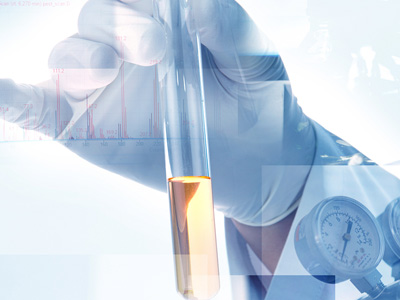Long-chain alkylbenzene is mainly used in the production of daily chemical products such as detergents and surfactants. There are two raw material ways of olefin and chloroalkane in production, both of which are in use at present.
- The production method using olefin as alkylating agent and hydrogen fluoride as catalyst is often called hydrogen fluoride method.

- The production method using chloroalkane as an alkylating agent and aluminum trichloride as a catalyst is often called the aluminum trichloride method.

In the formula, R and R' are alkyl or hydrogen.
Hydrogen Fluoride Method
The alkylation of benzene with long-chain n-olefins is generally carried out in liquid phase or in gas phase. All acids that can provide protons can be used as alkylation catalysts. HF is the most widely used in the alkylation of long-chain alkenes due to its advantages of stable properties, few side reactions, easy separation from the target product, low product cost and almost no corrosiveness to equipment.
The alkylation of benzene with long-chain olefins is complicated, which mainly includes the following aspects according to the source of raw materials.
- A small amount of impurities in alkanes and alkenes, such as dienes, polyenes, isomeric alkenes and aromatics participate in the reaction;
- Many isomers of alkylbenzene are formed due to the different double bond positions of long-chain monoolefins;
- In alkylation reaction, side reactions such as isomerization, molecular rearrangement, polymerization and cyclization may occur.
The degree of the above side reactions varies with the operating conditions, the purity and composition of raw materials, and its total amount often accounts for a few thousandths of alkylbenzene, but it has a great influence on the quality of alkylbenzene, such as the deep color of alkylbenzene and so on.
The production process of long-chain alkylbenzene by hydrogen fluoride method is shown in figure 1.
 Fig.1 Technological process for production of alkylbenzene by hydrogen fluoride
Fig.1 Technological process for production of alkylbenzene by hydrogen fluoride
1, 2-reactor; 3-HF distillation tower; 4-dehydrofluorination tower; 5-debenzene tower; 6-dealkane tower; 7-finished product tower; 8, 9-static separator
Reactors 1 and 2 are sieve tray towers. Mix the mixture of alkanes and olefins (9%~10%), benzene 10 times the volume of olefins, and hydrogen fluoride 2 times the volume of organic matter in a cooler and keep it at 30~40oC. At this time, most of the olefins have reacted. The mixture is sent to Reactor 1. In order to keep hydrogen chloride (boiling point 19.6oC) in a liquid state, the reaction is carried out at 0.5~1MPa. The material is discharged from the top to the static separator 8, and the organic matter in the upper layer, the circulating hydrogen fluoride discharged from the lower part of the static separator 9 and the fresh hydrogen fluoride purified by distillation enter the reactor 2 to completely react the olefins. The reaction product enters the static separator 9, and the material in the upper layer passes through the dehydrofluorination tower 4 and the debenzene tower 5, and hydrogen fluoride and benzene are steamed out; then to the dealkane tower 6 for vacuum distillation, and the alkane is steamed; finally to the finished product tower 7. The finished product of alkylbenzene is distilled at 96~99kPa vacuum degree and 170~200oC. The hydrogen fluoride discharged from the lower part of the static separator 8 dissolves some important aromatics. Part of this hydrogen fluoride goes to the reactor 1 for recycling, and the other part is purified by distillation in the distillation tower 3, and then sent to the reactor 2 for recycling.
Aluminum Trichloride Method
The long-chain chlorinated alkanes used in the aluminum chloride method are obtained by chlorination of straight-chain alkanes extracted from kerosene through molecular sieves or urea.
When reacting with benzene, in addition to the main reaction of alkylation, its side reactions and post-treatment are similar to the above-mentioned case where olefin is used as the alkylating agent. The difference is that the structure, material and catalyst of the alkylator are different.
The process of alkylation of long-chain chlorinated alkanes and benzene varies with the type of alkylation reactor, and the commonly used alkylation reactors are tank type and tower type. The single-tank batch-type alkylation operation is rarely used, and there are two types of continuous-operation alkylation equipment: multi-tank series and tower type. The former is mainly used in the alkylation process with aluminum trichloride as the catalyst. The latter is mainly used in a tower reactor with metal aluminum as a catalyst, and the alkylation reaction is carried out in three enamel tower groups arranged in series in a ladder shape.
The production process of long-chain alkylbenzene by the aluminum chloride method is shown in Figure 2.
 Fig. 2 Flow chart of metal aluminum catalytic condensation process
Fig. 2 Flow chart of metal aluminum catalytic condensation process
1-benzene high tank position; 2-benzene dryer; 3-chlorinated petroleum high tank; 4-chlorinated petroleum dryer; 5-condensation tower; 6-separator; 7-gas-liquid separator; 8-graphite condensation device; 9-gas scrubber; 10-stand still tank; 11-mud foot tank; 12-condensate storage tank
The reactor is an enamel tower with cooling jacket. There are small aluminum blocks in the tower. Benzene and haloalkanes enter from the lower port. The reaction temperature is about 70oC, and the total residence time is about 0.5h. In fact, the conversion rate will reach more than 90% after 5min. In order to reduce the viscosity of materials and control polyalkylation, the molar ratio of benzene to chloroalkane is (5~10):1. The liquid material from the reactor contains products, unreacted benzene, alkylbenzene and normal alkanes, a small amount of HCl and AlCl3 complex, and then it is placed to separate the initial red oil (sludge), some of which can be recycled, and the rest is converted into Al2(SO4)3 by sulfuric acid treatment and precipitated. The upper organic matter is neutralized with ammonia or NaOH and washed with water. Then distill and separate to get the product.














